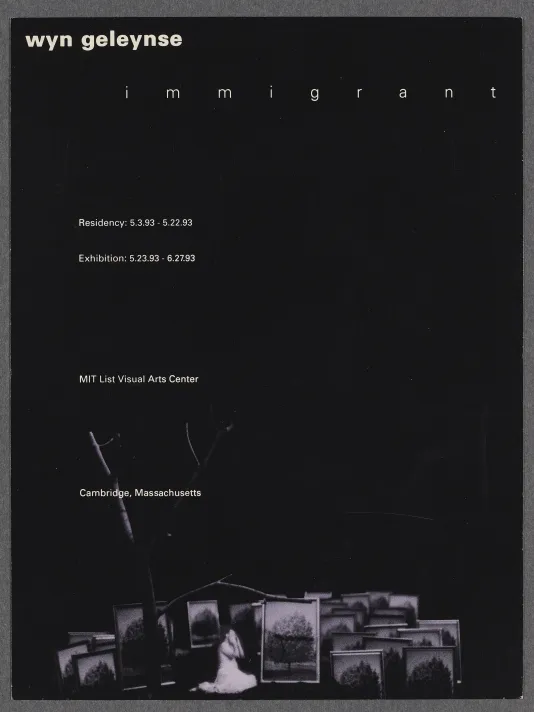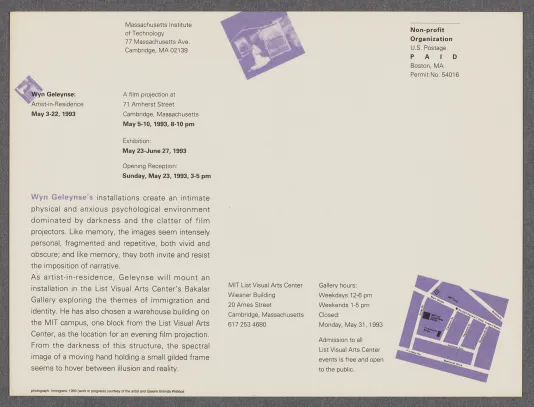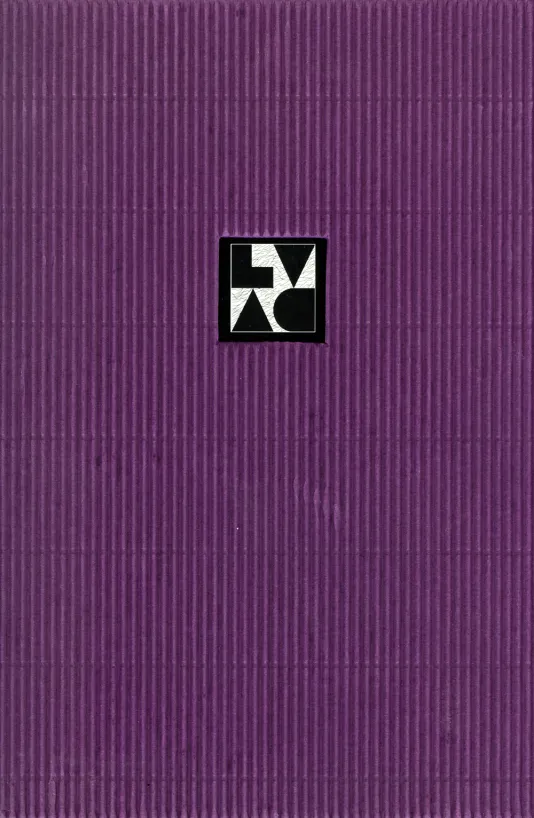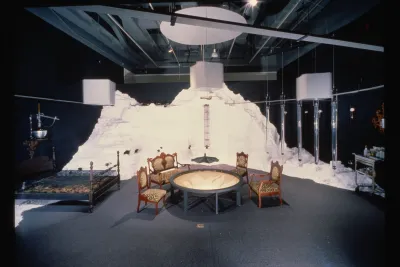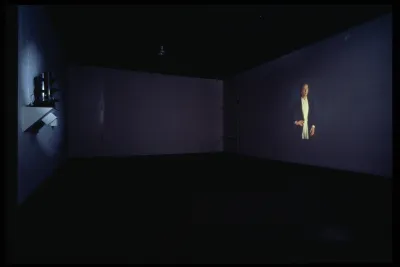The postcard for the exhibition Wyn Geleynse: Artist-in-Residence, MIT List Visual Arts Center, 1993.
Wyn Geleynse: Artist-in-Residence

As Artist-in-Residence at MIT through May 1993, Wyn Geleynse created a new installation, entitled Immigrant, for the List Visual Arts Center exploring the themes of immigration and identity. Geleynse has also chosen a warehouse building on the MIT campus, located one block from the LVAC at 71 Amherst Street, as the site for an evening film projection.
Geleynse’s installations create an intimate physical and anxious psychological environment dominated by darkness and the clatter of film projectors. Like memory, the images seem intensely personal, fragmented and repetitive, both vivid and obscure; and like memory, they both invite and resist the imposition of narrative. Immigrant relates to the experience of the artist, who as a native of Rotterdam, The Netherlands emigrated to London, Ontario with his family as a child. The installation consists of idealized landscape and seascape reproductions made for the Jig Saw puzzle trade, which the artist cuts up to fit into 2 ¼ x 3 ¼ inch gilded frames. Vistas of land and sea are reconstructed from these fragments, covering a gallery wall and spilling onto the floor. Films of the artist and of a boat slowly traveling across the water are projected onto this scene. The frames are used to establish possession, the boat depicts the immigrants physical and psychic voyage, while the idealized landscape is a hybrid of the refined, cultivated parks of Northern Europe and the rigged, frontier landscape of North America.
Looking up the warehouse ramp into the darkness at 71 Amherst Street, the viewer sees a spectral image of a moving hand holding a small, framed photograph of a hand. This mysterious, ghostly presence seems to hover between illusion and reality. As the hand moves, the framed glass intermittently reflects a bright light, creating a flash that signals to or catches the eye of the passerby. The structure and function of the building is an integral part of this simple image. Into an actual warehouse for theater, boating, and other storage, the artist projects the possibility of warehousing or holding the still and moving images, flashes of memory, and recollections that elusively comprise our own histories.
